A trio of asteroid-related stories crossed our emails this week: Bennu’s sample is on schedule for next year’s return, researchers have developed a tool to measure an asteroid’s density distribution, and 3200 Phaeton’s rotational period has accelerated. Plus, JWST’s new Pillars of Creation image, and this week in space history, we look back at Venera 4.
Podcast
Listen on Libsyn (Coming soon!)
Show Notes
Curiosity finally arrives at sulfate-bearing rock unit
- NASA JPL press release
Mars’s potential past microbial life forced underground
- The University of Arizona press release
- “Early Mars habitability and global cooling by H2-based methanogens,” Boris Sauterey et al., 2022 October 10, Nature Astronomy
Dealing with potentially hazardous asteroids
- NASA press release
- MIT press release
- “Constraining the interiors of asteroids through close encounters,” Jack T Dinsmore and Julien de Wit, 2022 October 19, Monthly Notices of the Royal Astronomical Society
- UCF press release
The Pillars of Creation still stand in JWST image
When clusters collide things get hot
- CXO image release
- CXO press release
- “Discovery of a Premerger Shock in an Intercluster Filament in Abell 98,” Arnab Sarkar et al., 2022 August 17, The Astrophysical Journal Letters
- “Suzaku Observations of the Cluster Outskirts and Intercluster Filament in the Triple Merger Cluster A98,” Gabriella E. Alvarez et al., 2022 October 13, The Astrophysical Journal
This Week in Space History: Twofer of Joy
- Venera 4 (NASA)
- NASA Armstrong Fact Sheet: First Generation X-1 (NASA)
Transcript
Today’s show is a tour de force of our Universe. From explorations of Mars by the Curiosity rover to missions exploring asteroids, we cover our solar system. And then, we bounce out across the universe to look at stars forming in our galaxy and distant clusters of galaxies colliding and tearing gas out of one another.
And we have this week in space history. This week we’re looking back in time at the Venera 4 mission and its short-lived exploration of the atmosphere of Venus.
Though really, existing for any amount of time on Venus is a thing worth celebrating.
All this and more is coming at you right here on the Daily Space.
And we are your hosts, Lindsey Odom – filling in for Pamela –
And I am Erik Madaeus.
And we are here to put science in your brain.

Science can be a long game, especially when dealing with space science. Distances are astronomical, and scales are measured in millions and billions. And while Mars isn’t far away, astronomically speaking, researchers have had to do a lot of waiting – waiting for missions to be designed, approved, launched, and arrive at the red planet. Add in the slow speed rovers travel, and that object you’ve wanted to study may leave you waiting for over a decade.
Such is the case with Curiosity and a sulfate-bearing rock unit first seen by the Mars Reconnaissance Orbiter back before Curiosity landed in 2012. Earlier this month, the rover made it to the unit after carefully working its way through a sandy pass, and the science team was thrilled as the images came in. Science operations coordinator Elena Amador-French enthused: We would get new images every morning and just be in awe. The sand ridges were gorgeous. You see perfect little rover tracks on them. And the cliffs were beautiful – we got close to the walls.
Curiosity sent back images that revealed diverse rock types and signs of past water, including what appear to be salty minerals such as magnesium sulfate (think Epsom salt), gypsum, and sodium chloride. Yes, that’s right. Table salt on Mars. And so on October 3, Curiosity drilled its 36th sample, after the science team chose a rock nicknamed “Canaima”.
Unfortunately, the sample has yet to be analyzed using the onboard CheMin and SAM instruments, but we’ll update you once NASA releases those results.
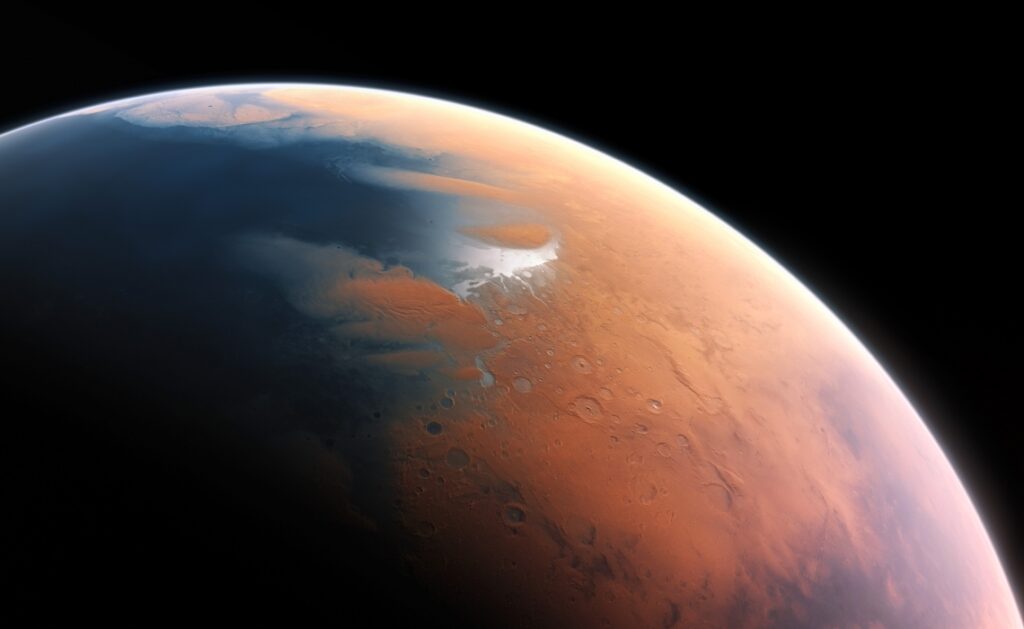
While some scientists have to wait for missions to gather samples, other researchers use models to test their hypotheses, especially when it comes to life on worlds beyond Earth. With planetary protection policies in place, we haven’t had any missions that allow for samples that could contain possible life. And with Mars, the prevailing thought is that life could have existed on Mars back during its wet past.
Now, in a new paper published in Nature Astronomy with lead author Boris Sauterey, one team of researchers modeled how an emerging ecosystem of microbes on Mars could have impacted the red planet. For their microsystem community, they used a model of Earth microbes capable of metabolizing carbon dioxide and hydrogen.
What they found is that those particular gases would have allowed the climate to be temperate, with flowing water and thriving microbial communities. However, as co-author Refis Ferriere notes: …our study shows that underground, early Mars would very likely have been habitable to methanogenic microbes.
So, yes, habitable. To microbes. Underground.
However, the models also show that those same microbes would have also caused Mars’ surface to become glacial. Martian life caused a chemical feedback loop that drove climate change and essentially destroyed their energy source as the atmosphere thinned out and nearly disappeared. Temperatures dropped, and any surviving microbes would have had to go further underground.
At this point, finding evidence of past life – or possibly current life – will have to likely wait until humans arrive on Mars.
And now, more long-game science and asteroids. All the asteroids.

First up, and probably most relevant to our community, NASA announced that the OSIRIS-REx sample of Bennu is on course to arrive at Earth on September 23, 2023. The delivery is not a foregone event, however, as the approach must be at a precise speed and direction. Deputy project manager Mike Moreau explains: If the capsule is angled too high, it will skip off the atmosphere. Angled too low, it will burn up in Earth’s atmosphere.
The spacecraft has already performed one course correction to stay on track for safe delivery, and design lead Daniel Wibben notes: Over the next year, we will gradually adjust the OSIRIS-REx trajectory to target the spacecraft closer to Earth.
At least this wait is down to under a year, right?
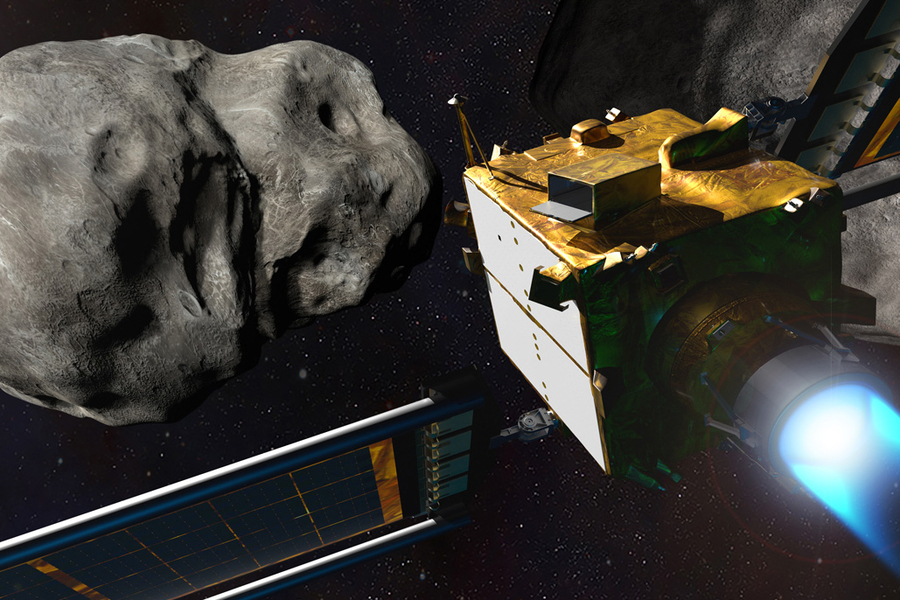
One of the things we learned from sampling Ryugu and Bennu is that rubble pile asteroids may be a lot less dense than more solid asteroids. And now that the DART mission has shown that we can nudge an asteroid, any future planetary defense plans will have to take into account the density of the body we need to move. We won’t know just how much damage Dimorphos took from DART until the Hera mission arrives in 2026, and researchers aren’t waiting until then to improve their tools.
So researchers at MIT have developed a way to map the interior structure of asteroids in order to understand the density distribution of their material. The team ended up writing more and more complex code to do their simulations and then ran the simulations forward in time to see how the spin of their coded asteroids changed when they passed close to a variety of masses. Co-author Julien de Wit explains: It’s similar to how you can tell the difference between a raw and boiled egg. If you spin the egg, the egg responds and spins differently depending on its interior properties. The same goes for an asteroid during a close encounter: You can get a grasp of what’s happening on the inside just by looking at how it responds to the strong gravitational forces it experiences during a flyby.
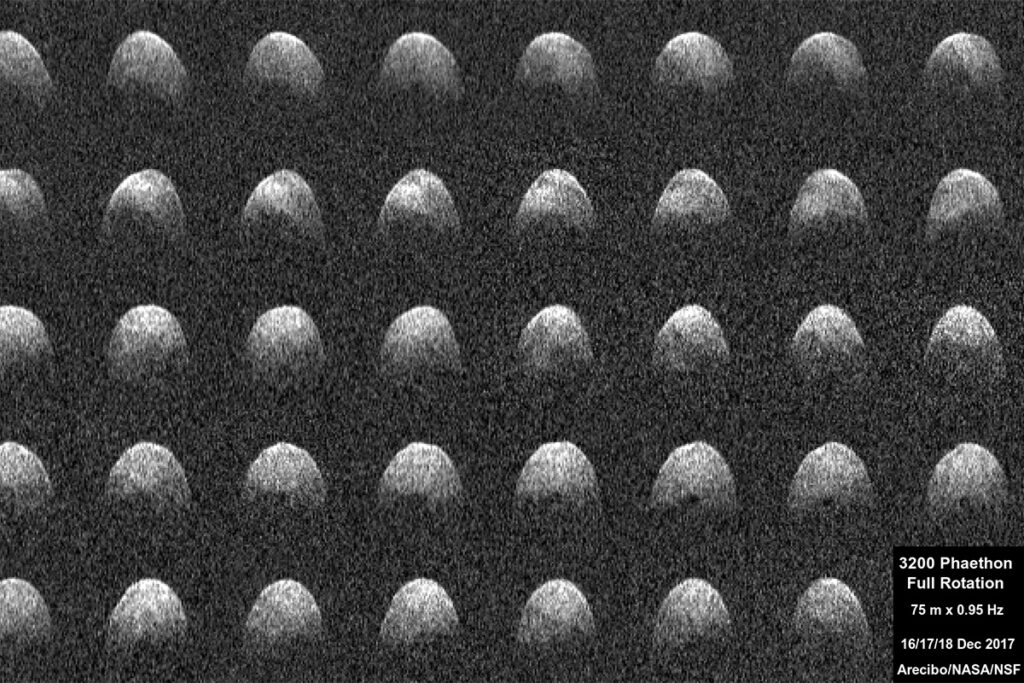
Finally, all of this ties together in the world of planetary defense as researchers announced that they measured a rotational change for the potentially hazardous asteroid, 3200 Phaethon. The measurements were collected in support of the upcoming DESTINY+ mission from JAXA, which will fly by Phaethon and make observations of the near-Earth asteroid. The change in the rotational period is an increase of about four milliseconds every year, and that number can be used to predict the orientation of Phaethon once DESTINY+ arrives.
In 2028, after a currently scheduled launch in 2024.
As I said, science can be a long game.
Speaking of long waits, coming up next, we’ll look at JWST’s gorgeous new image of the Pillars of Creation.
One of the most iconic images taken by the Hubble Space Telescope was the Pillars of creation. First imaged in 1995 and then reimaged at higher resolution in 2014, the Pillars of creation are stunning columns of dust that harbor young and still forming stars.
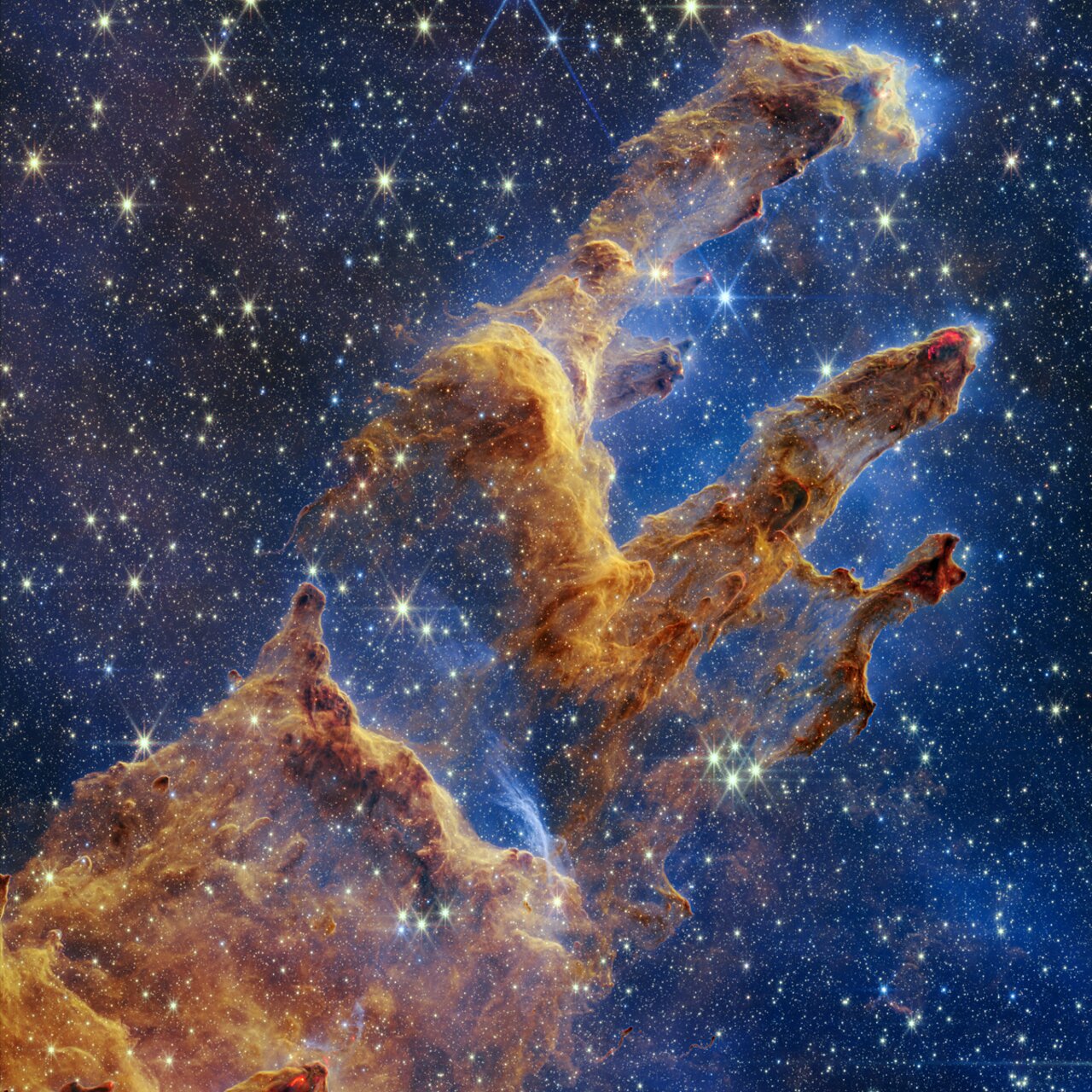
Today we are pleased to bring you the newest image of the Pillars – an image taken by the JWST. Looking at this familiar object in Infrared light, JWST is able to cut through some, but not all of the dust that fills this field.
The Pillars of Creation are just one small part of the larger Eagle Nebula or M16. Classified as an open cluster, it is just one to two million years old, and we are seeing the largest stars shine and smaller stars working to pull themselves together.
This is just an image release. We still have to wait to find out what new science this image has to teach us. For now, we can simply enjoy the things that are obvious.
Looking around the edges of the pillar, we can make out the occasional eruption of red from the pillars’ edges. These are jets coming off forming stars. We also see that the entire image glows with light either reflected off the gas or transmitted through it. The Eagle nebula is in the disk of our Milky Way, and not even JWST can pierce through all the material that fills not just this nebulae but also diffusely lurks in the space between the stars.
Gas really lurks in a lot of different places. As we search our universe for missing matter, we aren’t just looking for dark matter, we’re also looking for gas and dust. And that stuff is really hard to find sometimes – at least in the colors of light we see with our eyes. That means we need to go looking for it in other ways. The Chandra X-Ray Observatory is just the tool researchers need.
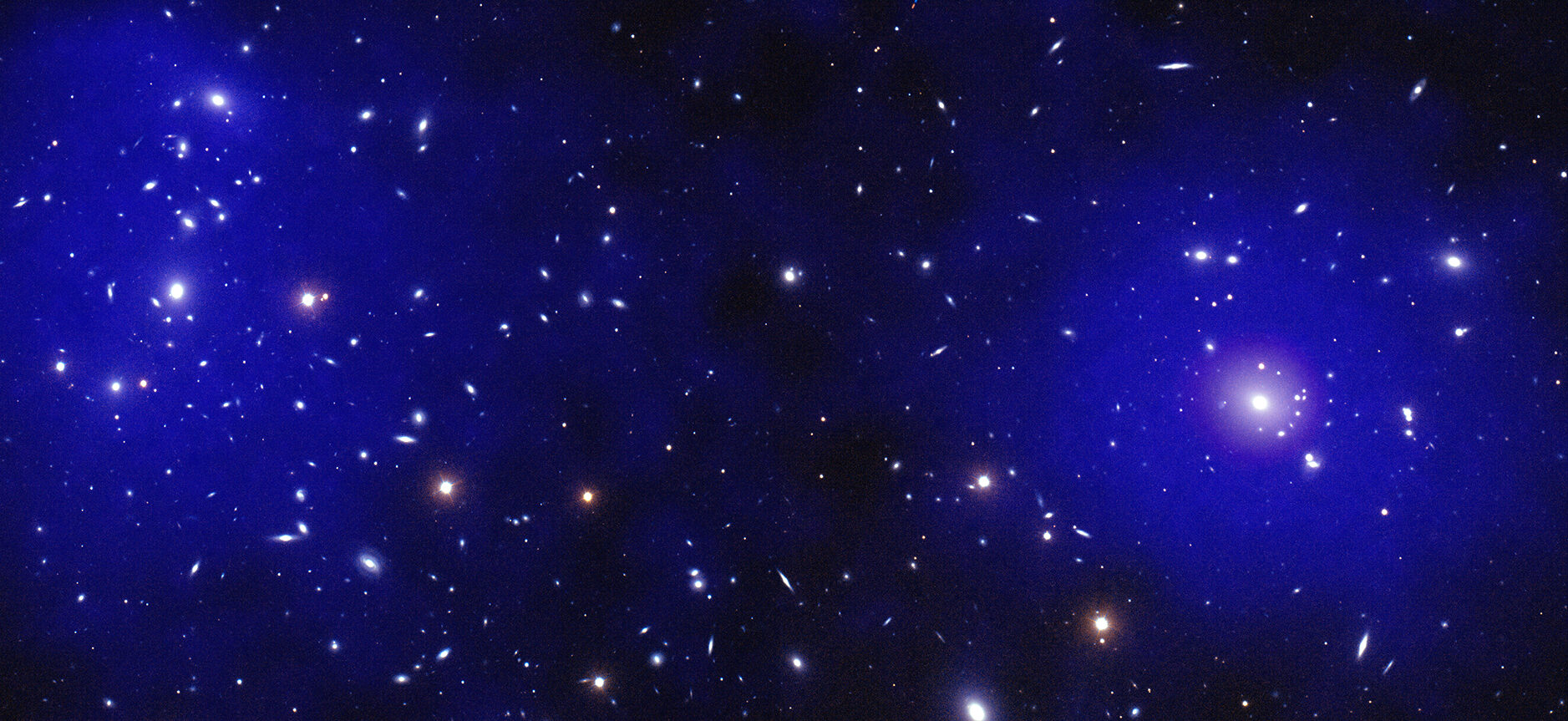
A newly released image of the merging galaxy cluster Abell 98 reveals a faintly shining network of hot gas connecting the two cluster cores. This gas is termed the “warm-hot intergalactic medium” or WHIM by the researchers.
And by warm, they mean ten thousand to ten million Kelvin!
This network of gas is formed by a shockwave that is created by the clusters’ collision. According to team researcher Scott Randall: We think this shock wave is an important discovery because our models have predicted such features should be there, but we haven’t seen one until now. They’re a key part of the early collision process that will eventually lead to a merger of the clusters.
That, and they are made of the missing gas we needed to find. The team estimates there is 400 billion times the mass of the Sun connecting these galaxies.
So, there you have it. JWST in infrared finds the cool gas forming stars, and Chandra finds the missing hot gas hiding between galaxies in X-ray light. It really does take all kinds of light to understand our universe.
From today’s discoveries, we now turn to Erik and yesterday’s space missions.
This Week in Space History

This week in space history is a bit special. Not only am I recording this from Pamela’s studio instead of my own monitor fort, but this week is a two-for-one topic. We’re going to talk about both the mission of Venera 4 and the first supersonic flight.
As its name suggests, Venera 4 was the fourth officially-named mission the Soviets sent toward Venus. However, it was the eighth attempt overall, as several other Venera-type missions failed to either reach or leave Earth orbit and were given a cover designation other than Venera.
Venera 1 through 3 made it out of Earth orbit, but contact was lost for various reasons. The first two missed Venus, while Venera 3 hit the planet two weeks after its transmitter failed.
Venera 4 had to succeed in sending back data from Venus.
Although the design was similar to previous missions, responsibility for making the probe was given to a different Soviet design bureau than the previous three. The biggest change was more rigorous ground testing of the spacecraft before launch to ensure it worked as intended.
And work it did. Venera 4 was launched on June 12, 1967, and arrived at Venus in October of the same year. The entry probe entered the atmosphere of Venus at 04:34 UTC on October 18. It hit the top of the atmosphere at 11 kilometers a second, reaching a peak deceleration of 300 gees.
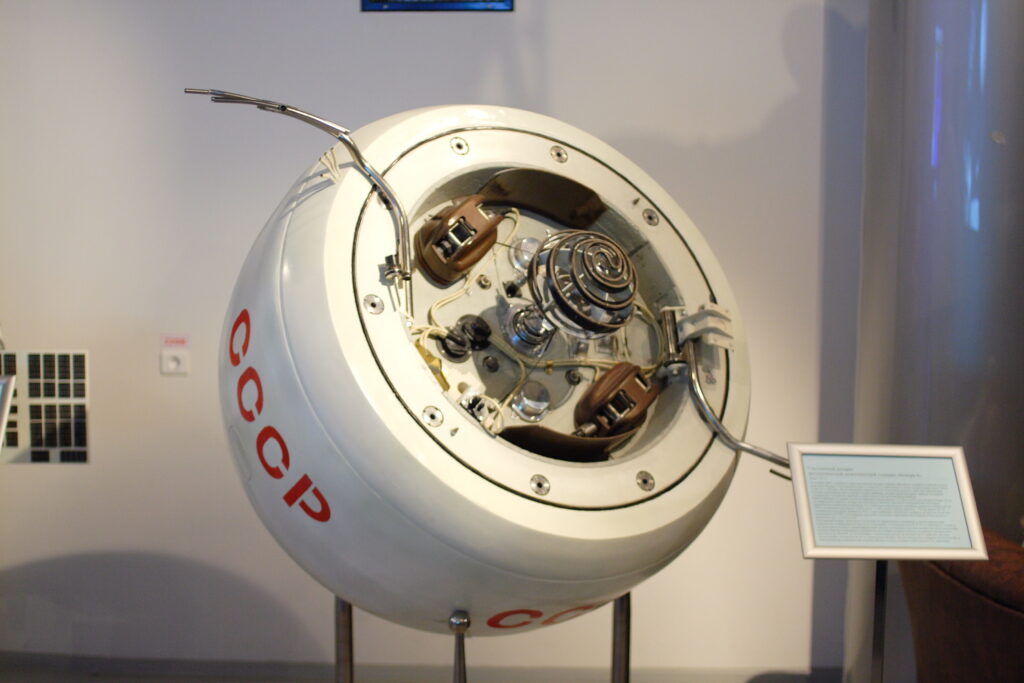
It started sending back data after parachute deployment, and what it reported shocked scientists. From Mariner 2’s distant flyby, scientists knew Venus was really hot, at least 260 degrees Celsius, but Venera 4 measured a value from inside the atmosphere that varied from 33 to 262 degrees Celsius, depending on altitude.
What the flyby of Mariner 2 couldn’t determine was the pressure of Venus. Scientists didn’t know what it could be, so the instrument was only designed to measure up to 7.3 bars. This was maxed out quickly, and the actual value inferred from other data was over 75 bars of pressure. For reference, one bar is normal Earth pressure at sea level.
Other discoveries Venera 4 made included expanding knowledge about the composition of Venus’ atmosphere and the planet’s magnetic field. Before the mission, it was thought that the atmosphere was mostly nitrogen, but data sent back from Venera 4 indicated that Venus’ atmosphere was actually over 90% carbon dioxide and that the tops of the thick clouds obscuring the surface were at around 52 kilometers about the surface and extended down to 35 kilometers above the surface. It also confirmed that the planet has a weak magnetic field.
Venera 4 got further than its predecessors but unfortunately, didn’t make it to the surface as planned. The high pressure and temperature crushed and melted the spacecraft at an approximate altitude of 28 kilometers above the surface.
In all, Venera 4 transmitted for 93 minutes in the atmosphere of Venus, but it was not equipped with a camera. Based on the results of Venera 4, Venera 5 and 6 were designed to simply collect data from the atmosphere. The first successful landing on the surface of Venus was achieved by Venera 7 in December 1970.
Moving on: the first supersonic flight of the Bell X1.
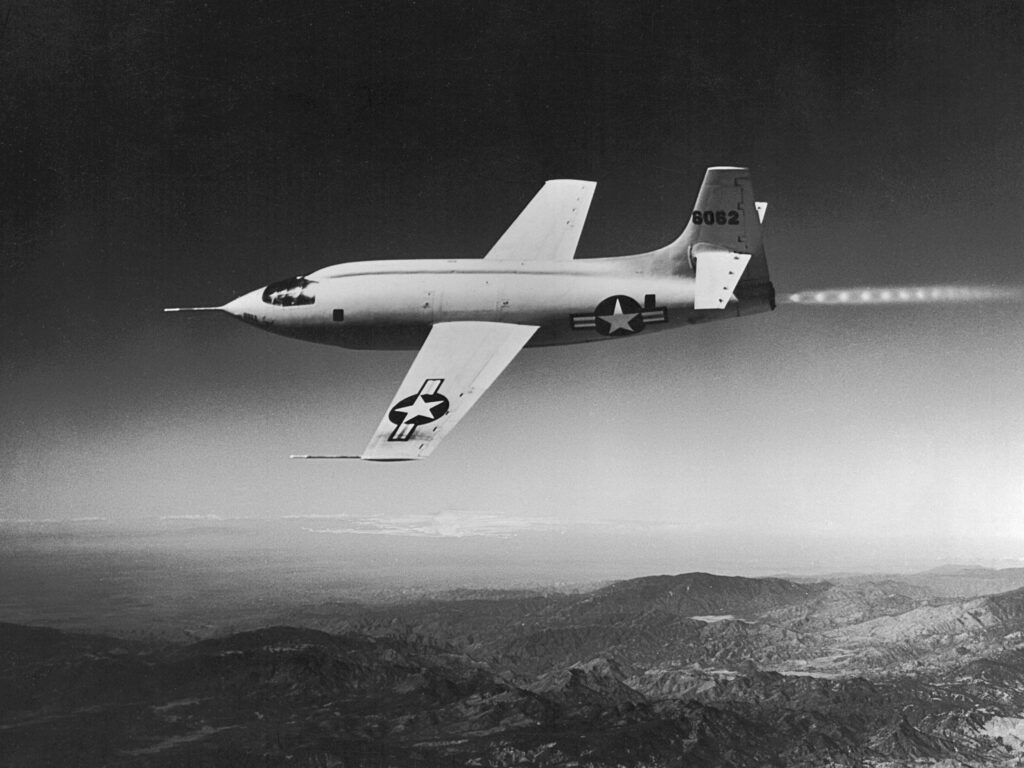
After World War II, the next major challenge in aircraft design was flying faster than the speed of sound.
Starting right after the war, the U.S. Navy, along with NACA, the predecessor to NASA, and the U.S. Air Force started the development of a new experimental plane. It would attempt to solve control problems of flying at around and above supersonic speed. The design was simple: it used the same shape as a .50 caliber bullet, which was known to be stable at supersonic speeds.
The first X1 was finished in late 1945, and its first powered flight was a year later on December 9, 1946.
The rest of the test program was split between the Air Force and NACA. The Air Force would attempt to break Mach 1 as soon as possible, while NACA would take a more studied approach and conduct test flights to study the conditions just below the sound barrier.
The USAF’s riskier approach was uncomfortable to the NACA engineers, but they pressed on. Only six weeks after the change in test programs, the now famous pilot Chuck Yeager flew the USAF’s X1 to Mach 1.06 on October 14, 1947. That X1, which was the first one built, was used several more times before being retired in May 1950. Following retirement, it was donated to the Smithsonian Museum. It is currently on display in the Milestones of Flight Gallery in the National Air and Space Museum in Washington, D.C.
Breaking the sound barrier sounds like a major achievement that would be a major propaganda boost in the Cold War, but did the U.S. make a deal about it at the time? No. Instead, the flight was classified and only revealed publicly in March 1948.
A NACA pilot, Herbert Hoover (unrelated to the President) would finally break the sound barrier on March 4, 1948. He reached Mach 1.1 three weeks later.
Statistics
And now, for some statistics.
The number of toilets in space is eight: four on the ISS, one on Soyuz MS-22, one on Crew Dragon Freedom, one on Tianhe, and one on Shenzhou 14.
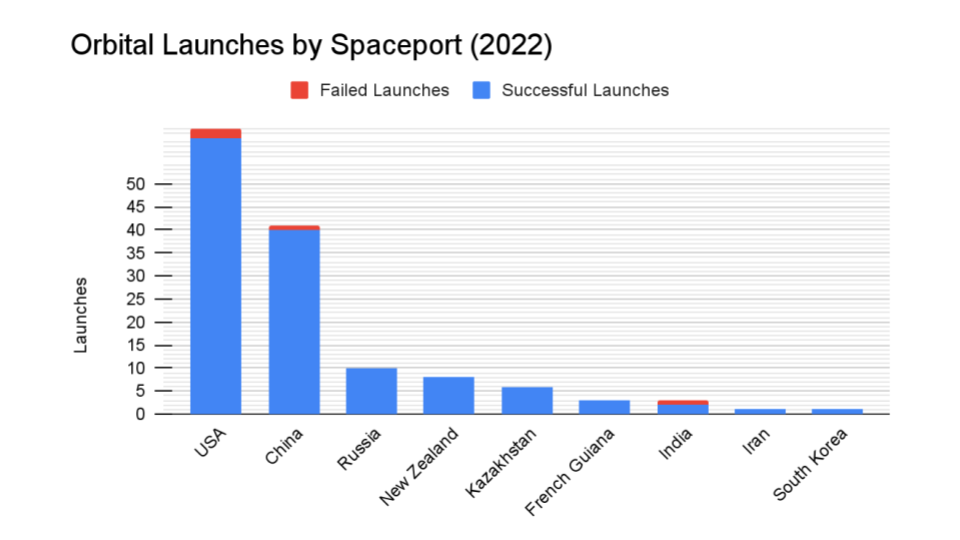
We keep track of orbital launches by launch site, also called spaceport. Here’s that breakdown:
USA: 62
China: 41
Russia: 10
New Zealand: 8
Kazakhstan: 6
French Guiana: 3
India: 3
Iran: 1
South Korea: 1
From those 131 launches, a total of 1,982 spacecraft have been put into orbit.
Your random space fact for this week is that SpaceX’s Starship, while stacked, is smaller than the warp nacelle of the original Enterprise in Star Trek… but only slightly.
This has been the Daily Space.
You can find more information on all our stories, including images, at DailySpace.org. As always, we’re here thanks to the donations of people like you. If you like our content, please consider joining our Patreon at Patreon.com/CosmoQuestX.
Credits
Written by Pamela Gay, Annie Wilson, Beth Johnson, Erik Madaus, and Gordon Dewis
Hosted by Pamela Gay, Beth Johnson, and Erik Madaus
Audio and Video Editing by Ally Pelphrey
Content Editing by Beth Johnson
Intro and Outro music by Kevin MacLeod, https://incompetech.com/music/


 We record most shows live, on Twitch. Follow us today to get alerts when we go live.
We record most shows live, on Twitch. Follow us today to get alerts when we go live.
Is this the last Daily Space?? I hope not.